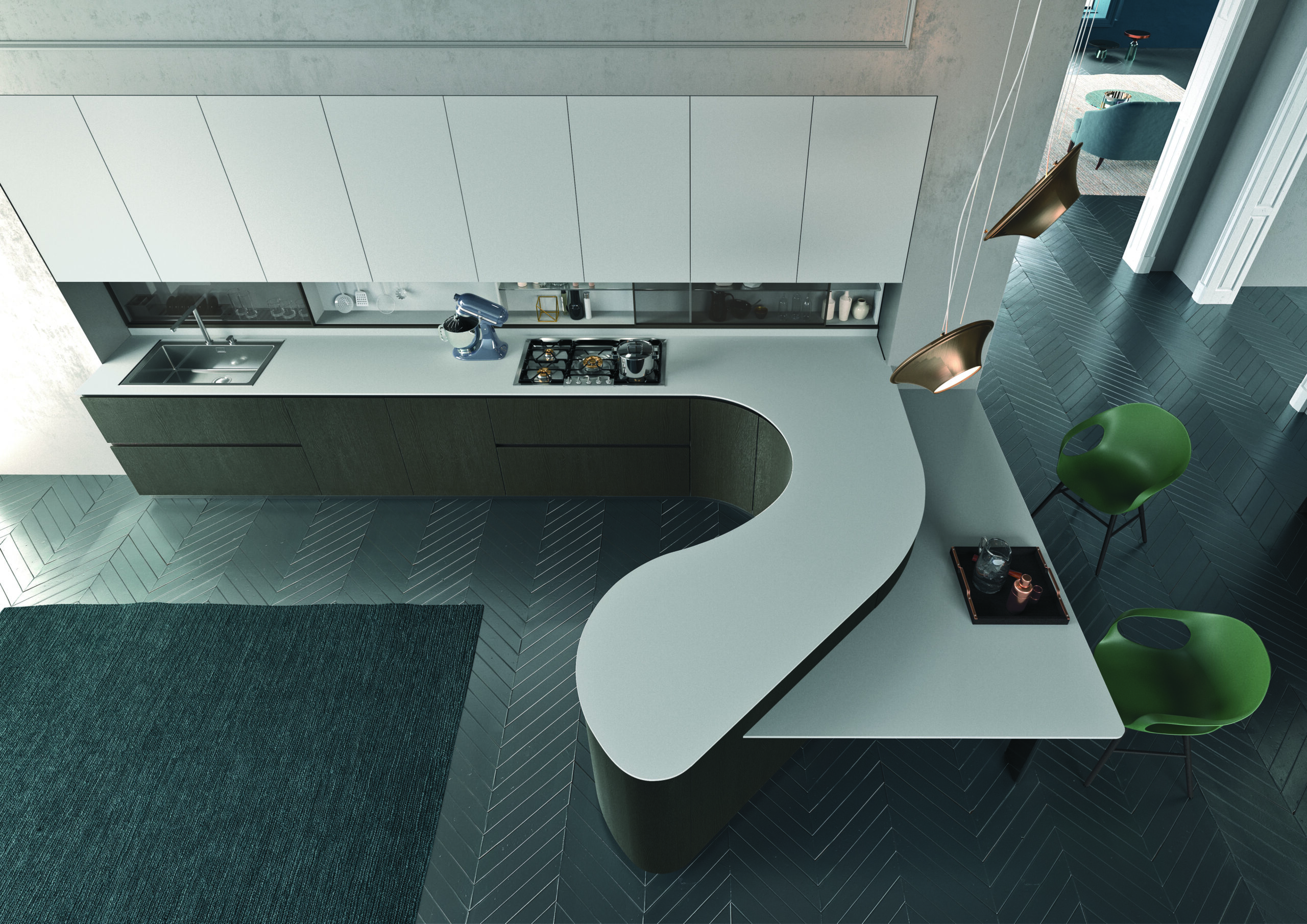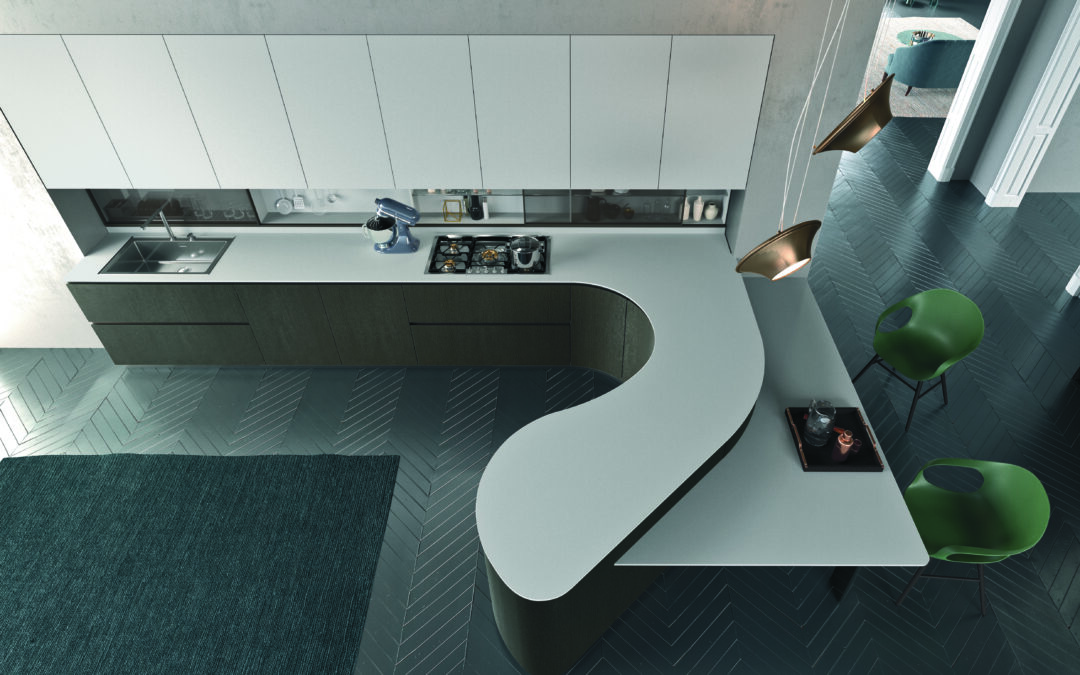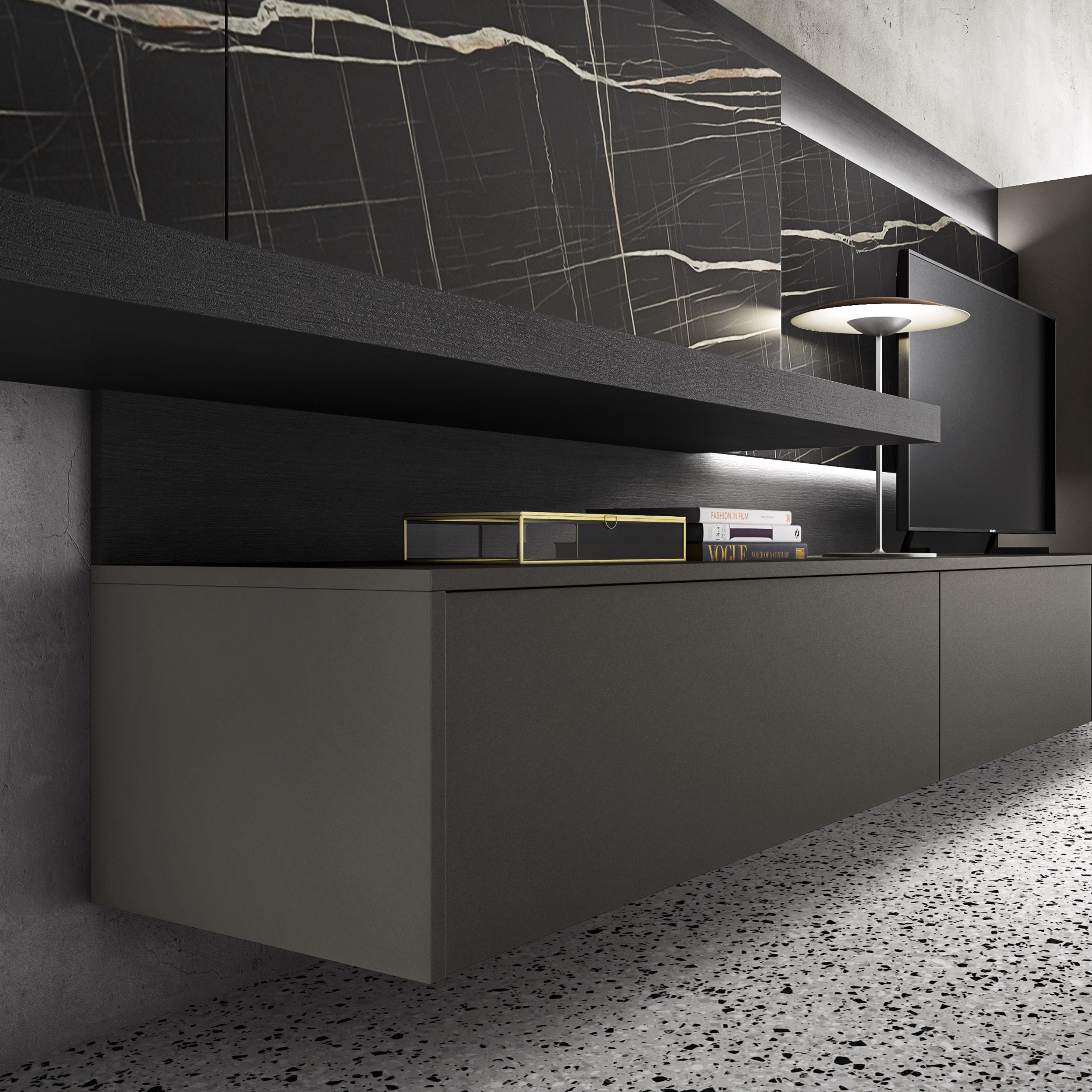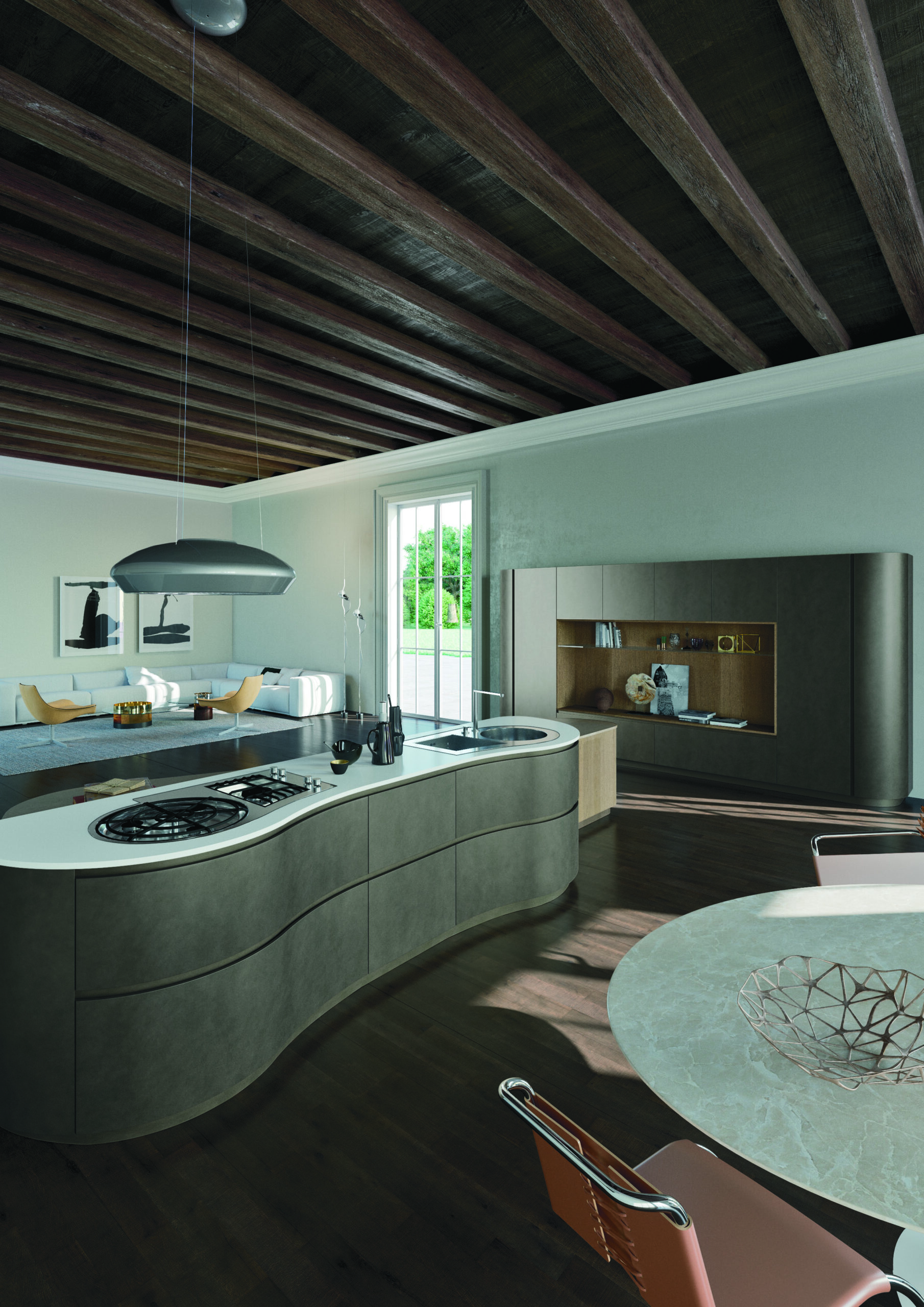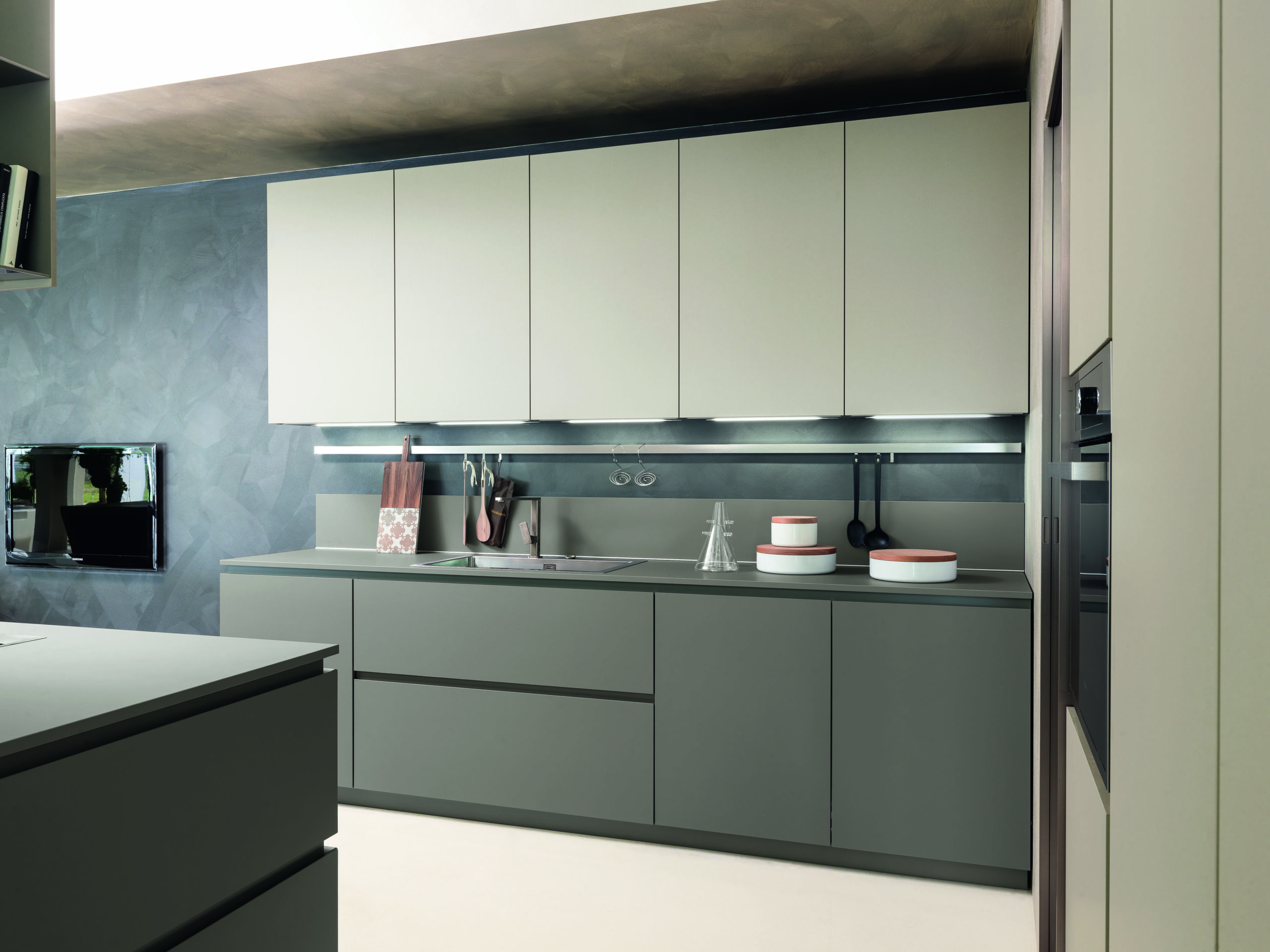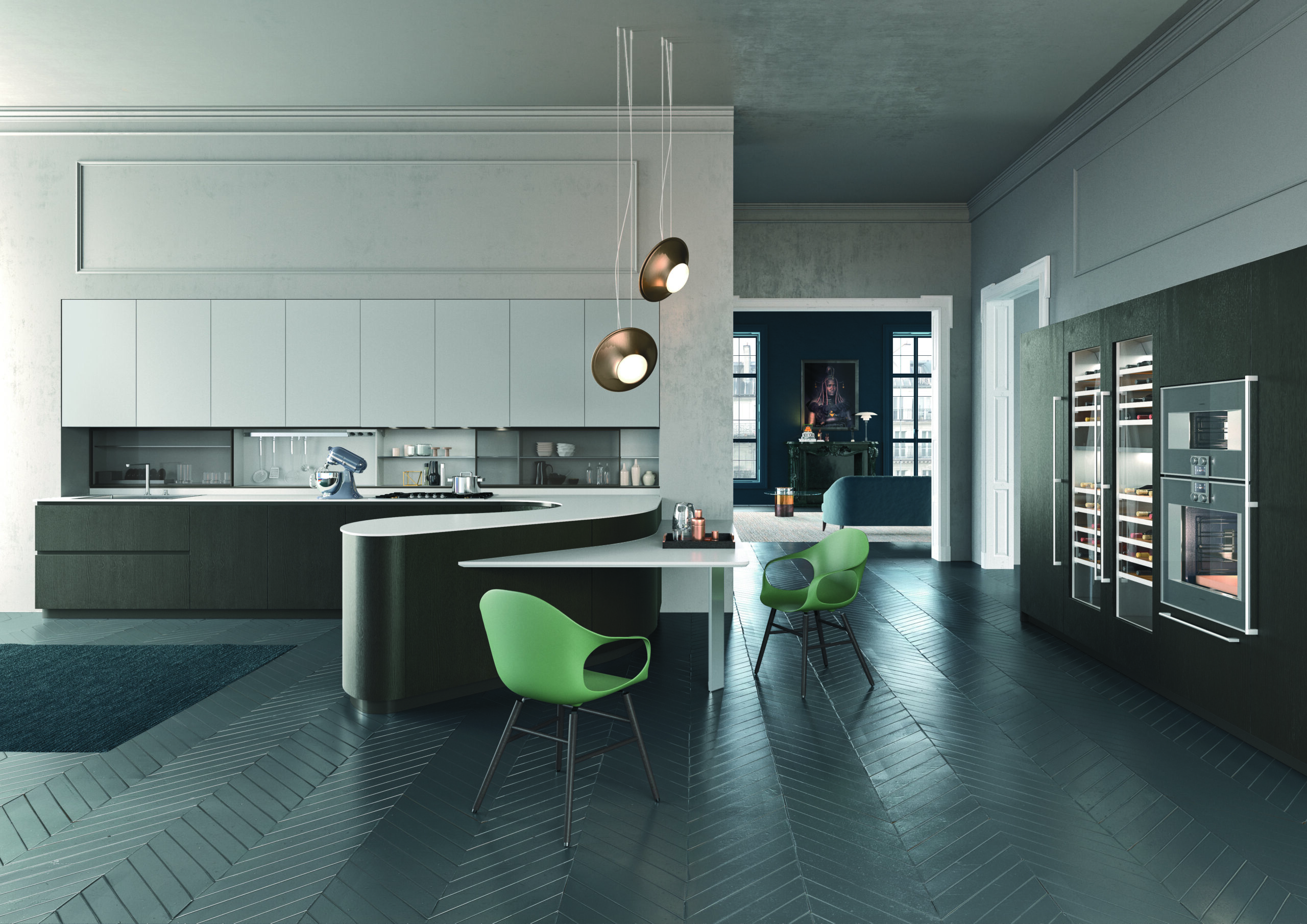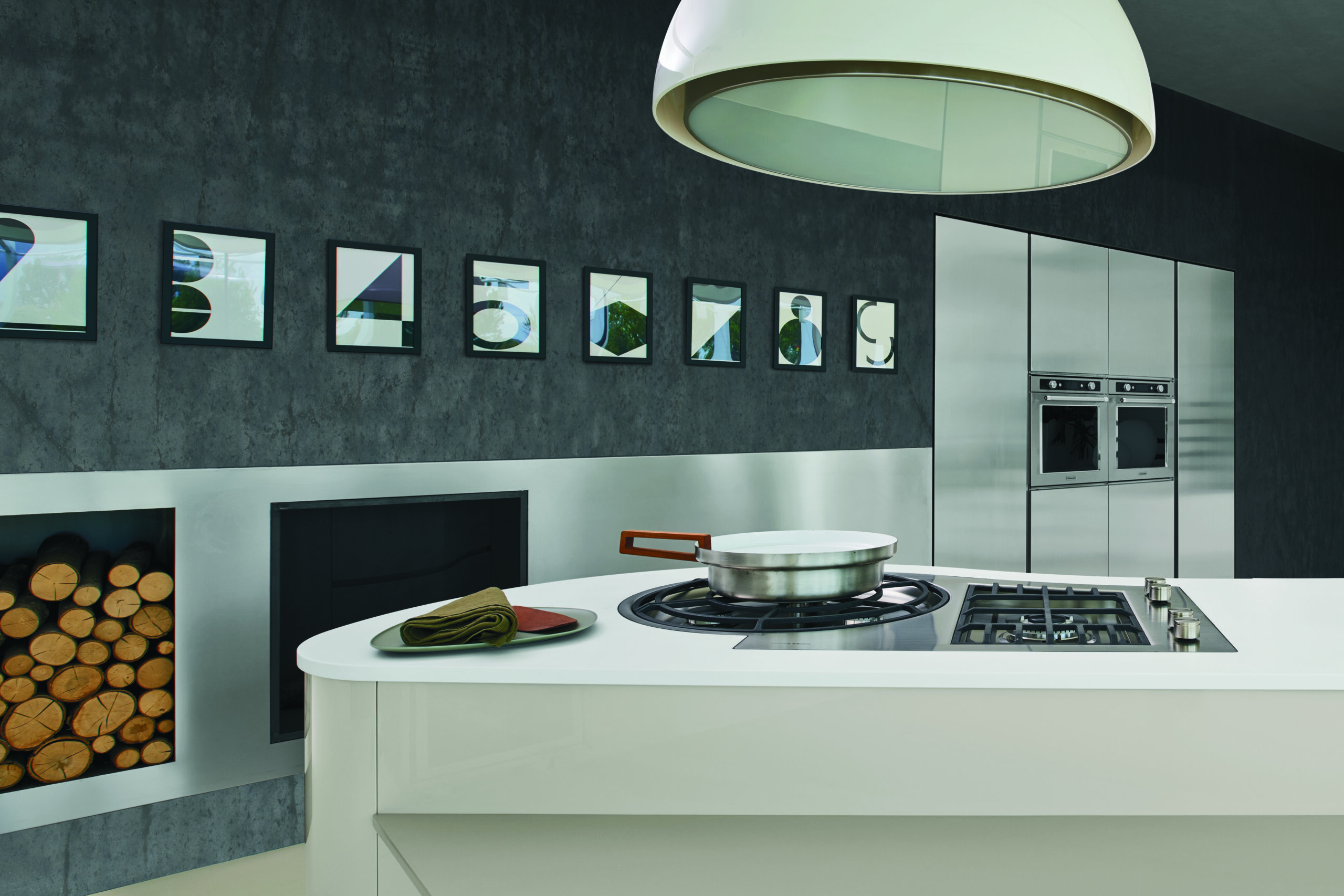What defines the allure of Italian kitchens? It’s the artful mix of classic elegance and modern practicality. In this article, we dissect those elements that make Italian kitchens a favorite: stylish marble countertops, organic materials, and clever integrations of high-tech appliances in spaces rooted in tradition. Learn how to embrace the Italian approach to kitchen design in your own home, meeting the needs of today’s living with an unmistakable touch of Italy.
Key Takeaways for Italian Kitchen
- Modern Italian kitchens blend traditional elements and contemporary design, offering a mix of high-quality materials like marble and wood with innovative layouts and smart appliances to create functional, beautiful spaces.
- Customization and personalization are central to Italian kitchen design, allowing for the integration of family heirlooms, personal touches, and a mix of materials and finishes to create a unique space that reflects individual taste and history.
- Maintenance of Italian kitchens is vital to their longevity, requiring gentle cleaning of high-end surfaces like marble and regular upkeep of appliances to ensure both beauty and functionality are preserved over time.
Exploring the Heart of Italian Kitchen Design
Italian kitchen design is a tapestry woven with threads of high-quality craftsmanship and an inviting atmosphere, where exposed brick or stone walls add a unique texture and historical depth. The kitchen, the epicenter of the home, is more than a mere place for meal preparation; it’s a space where beauty and functionality dance in perfect harmony.
In Italy, where food is a form of art, kitchens are designed to inspire and foster warmth, seamlessly integrating traditional elements with innovative design to create a beautiful kitchen that is truly the heart of the home.
The Allure of Marble Countertops
The marble countertops in an Italian kitchen are not just surfaces; they are the pièces de résistance that elevate the entire space. Revered for their unmatched beauty and resilience, marble varieties like Carrara and Calacatta offer a canvas of elegance against both traditional wood cabinetry and contemporary glossy finishes. These high-quality countertops are the epitome of Italian luxury, versatile enough to withstand the rigors of daily use while maintaining their understated elegance.
As a significant investment, these stone marvels also contribute to the home’s value, offering homeowners a tangible return on investment that transcends mere aesthetics.
Embracing Wood Tones and Natural Materials
The embrace of wood tones and natural materials is intrinsic to the Italian kitchen, creating an environment that is not just cozy but steeped in history and comfort. The enduring appeal of terracotta and natural stone flooring roots the kitchen in the rustic charm of the Tuscan countryside, offering both durability and a tangible connection to Italy’s agrarian past.
Modern Italian kitchens continue this tradition, incorporating stone and wood to foster a sense of warmth and homeliness that is both timeless and inviting.
Crafting the Ideal Kitchen Layout
The ideal kitchen layout in contemporary Italian design is a masterful blend of form and function, embracing open concepts that allow for a seamless flow between spaces. Repurposed antique furniture, such as a hutch or dresser topped with a stone slab, becomes the centerpiece of the kitchen, serving as a practical and historical anchor within the decor.
This personalization of space not only optimizes functionality but also tells a story, making the kitchen a place where meals and memories are crafted with equal care.
The Fusion of Traditional Charm and Contemporary Sophistication
As we delve further into the world of modern Italian kitchen designs, we find a space where traditional charm and contemporary sophistication converge to create a kitchen design that is both efficient and welcoming. These kitchens are a testament to Italy’s rich design heritage, with each region adding its unique style—from the vibrant tiles of Sicily to the wooden beams and terracotta of Tuscany. The integration of natural materials and high-tech features reflects the country’s sustainable approach and its ‘cucina povera’ philosophy, ensuring that these spaces are as environmentally conscious as they are beautiful.
With flexible, modular systems, contemporary Italian kitchens embody finesse and offer endless possibilities to tailor the space to one’s lifestyle.
Incorporating Modern Appliances into Classic Decor
Modern Italian kitchens seamlessly incorporate state-of-the-art appliances into their classic decor, striking a balance between old-world charm and modern efficiency. Some key features of these kitchens include:
- Smart appliances woven into rustic elements and ornate details
- Contemporary cabinets with clever storage solutions like pull-out shelves
- Customization, with appliances often integrated into cabinetry for a smooth visual flow
- Dedicated coffee stations or built-in espresso machines, reflect the Italian passion for coffee and merge traditional elements with contemporary comfort.
Here at Pedini Miami we have become synonymous with Italian innovation, crafting custom kitchen designs that are not only efficient but also steeped in the traditions of Italian craftsmanship.
Sleek Cabinetry and Bold Color Choices
The elegance of an Italian kitchen is often accentuated by:
- Sleek cabinetry
- Bold color choices
- Slab doors
- Slim countertops
- Monochromatic color schemes
- High-gloss finishes
These features create a harmonious and sophisticated atmosphere, with a contemporary edge.
The interplay of sleek cabinetry and bold colors, often complemented by stainless steel accents, transforms traditional Italian kitchens into contemporary masterpieces that blend style and function in equal measure.
Creating a Cozy Breakfast Nook in Your Italian Kitchen
In the heart of an Italian kitchen lies the potential for a cozy breakfast nook, a space designed for conviviality and warmth. With the use of warm tones and materials like wood or terra cotta, the nook becomes a welcoming retreat that embodies the inviting atmosphere of Italian design.
The inclusion of a round table can maximize space and foster intimacy, making the breakfast nook a cherished spot for family gatherings and quiet morning moments alike.
Selecting the Right Furniture and Accessories
Choosing the right furniture and accessories is crucial in enhancing the ambiance of the breakfast nook. A quality dining table with a flexible design, such as an extendable leaf, can accommodate different numbers of guests, while rustic chairs and cushioned seating add comfort and personality.
Functional storage solutions like china cabinets not only serve practical purposes but also contribute to the room’s decor, with open shelving allowing for the display of cherished items, enhancing the nostalgic feel of the kitchen. To honor Italy’s rich viticultural heritage, incorporating dedicated storage for wine or beer is a thoughtful touch.
Perfecting Lighting and Ambiance
Lighting plays a pivotal role in creating the perfect ambiance for a breakfast nook in an Italian kitchen. Statement light fixtures serve as both functional and decorative elements, while LED lighting enhances specific features, adding to the warm and inviting environment.
Imagining the soft glow of a chandelier or the understated elegance of recessed lighting, one can see how these choices set the stage for memorable mornings and cozy evenings.
The Art of Italian Kitchen Decor: From Wall to Table
The art of Italian kitchen decor is a celebration of the country’s rich culinary traditions. It includes:
- Walls adorned with Tuscan landscapes
- Tables set with traditional glassware and ceramic dishes
- Decorative plates
- Wine-themed artwork
These elements are more than mere decorations; they are expressions of a deep-rooted passion for food and wine.
Centerpieces featuring Italian herbs or fresh produce bring the vibrant colors and aromas of Italy to life, while functional tools like espresso makers and pasta drying racks double as stylish decor pieces.
Integrating Texture and Artwork
The integration of texture and artwork is essential to the Italian kitchen aesthetic, with textured walls and wrought iron elements adding depth and Tuscan elegance. Art prints depicting the region’s iconic landscapes or wine motifs serve as a visual celebration of Italian cultural elements and culinary traditions, enhancing the kitchen’s overall design.
Accessorizing with Italian Flair
Accessorizing with Italian flair means infusing the kitchen with personal narratives and historical depth. Artwork and images celebrating Tuscany’s food culture, from the simplicity of fresh produce to the intricate designs of ceramics and ironwork, bring an artistic flair to the space.
Integrating vintage utensils, and family recipes, or creating a shadow box to display treasured kitchen tools offers a unique personal touch that exemplifies Italian culinary history and traditions.
Customizing Your Italian Kitchen to Reflect Your Taste
An Italian kitchen becomes truly yours when it reflects your taste, lifestyle, and personal narrative. Customization is about more than just aesthetic choices; it’s about creating a space that resonates with your individuality. Here are some ways to customize your Italian kitchen:
- Mix materials and finishes to create a unique look
- Integrate family heirlooms that add a sense of history and familial pride to your kitchen
- Incorporate personal touches such as artwork or photographs that reflect your interests and passions
By following these tips, you can create a customized Italian kitchen that is truly one-of-a-kind.
Mixing and Matching Materials and Finishes
The beauty of customization lies in the freedom to experiment with a mix of materials and finishes to create a unique kitchen aesthetic. Stone countertops with subtle patterns can be combined with butcher block sections for a visually interesting space, while mixed metals like copper accents or brass pendants add warmth and contrast to the design.
Incorporating Family Heirlooms and Personal Details
By incorporating family heirlooms and personal details, an Italian kitchen can tell a story that spans generations. Some ideas for incorporating these elements include:
- Repurposing an old family table as a kitchen island
- Using wooden chairs that have been in the family for years
- Displaying family photos or artwork on the walls
- Incorporating traditional Italian ceramics or pottery into the decor
These focal points embody tradition and craftsmanship, adding a unique and personal touch to the kitchen.
Custom engravings on cabinet handles or family initials on backsplash tiles are subtle yet powerful ways to weave your family’s legacy into the very fabric of your kitchen.
Spotlight on Innovation and Design Excellence
Brands like Alpes-Inox and Officine Gullo are the embodiment of Italian creativity, with kitchen systems that push the boundaries of design and functionality. Alpes-Inox’s focus on innovative ‘kitchen systems’ demonstrates their commitment to enhancing both the aesthetics and efficiency of the modern kitchen.
Officine Gullo offers custom solutions that combine timeless aesthetics with cutting-edge technology, setting new standards for innovation and design excellence in the industry.
How to Maintain the Beauty and Functionality of Your Italian Kitchen
Maintaining the beauty and functionality of your Italian kitchen is as much about regular care as it is about the initial design choices. High-end surfaces like marble and wood require specific cleaning methods to preserve their elegance, and appliances need regular maintenance to ensure they remain in top condition.
By understanding the nuances of each material and staying vigilant with upkeep, you can ensure that your Italian kitchen remains a centerpiece of your home for years to come.
Cleaning and Upkeep of High-End Surfaces
The longevity and beauty of marble countertops in an Italian kitchen hinge on gentle cleaning and maintenance. Here are some tips to keep in mind:
- Use warm water mixed with neutral detergents or specially formulated marble cleaners to avoid etching the surface.
- For persistent stains, a poultice made from absorbent material and liquid cleaner can be effective.
- Ensure that the marble retains its lustrous shine without succumbing to damage.
Regular Maintenance for Longevity
To love an Italian kitchen is to care for it regularly, ensuring that every cabinet hinge, door seal, and appliance continues to function beautifully. Regular checks and maintenance by Luxury Kitchen Designers in Miami not only preserve the kitchen’s aesthetic appeal but also extend its lifespan, making it a testament to both Italian craftsmanship and your dedication to preserving its charm.
Summary
As we encapsulate our journey through the rich tapestry of Italian kitchen design, it’s clear that these spaces are more than just areas for culinary endeavors; they are a blend of tradition, innovation, and personal expression. From the timeless allure of marble countertops to the integration of sleek, modern appliances and the intimate touch of a cozy breakfast nook, Italian kitchens are a tribute to the country’s heritage and a canvas for individual creativity. With the right care and attention, these kitchens not only stand as a paragon of design but also remain functional and beautiful for years to come, embodying the very essence of the Italian way of life.
Frequently Asked Questions
What are the colors of traditional Italian kitchens?
Traditional Italian kitchens typically feature a warm and rustic style, using materials like terra cotta and stone for the flooring, with a rich color palette that includes oranges, golds, and yellows.
How can I make my kitchen look Italian?
To give your kitchen an Italian look, consider using wooden units, opting for shaker or inset door styles and adding knob or bar handles. Additionally, choose wood or granite worktops to complete the look.
Can modern appliances be integrated into an Italian kitchen without disrupting the design?
Yes, modern appliances can be seamlessly integrated into an Italian kitchen through clever cabinetry solutions and specific brands like Alpes-Inox and SMEG are known for this combination of high-tech functionality and traditional Italian design.
Are there specific maintenance tips for marble countertops in an Italian kitchen?
To maintain marble countertops in an Italian kitchen, clean with warm water and neutral detergents, dry and buff after cleaning, blot spills immediately, and use a poultice for tougher stains, while avoiding abrasive materials.

